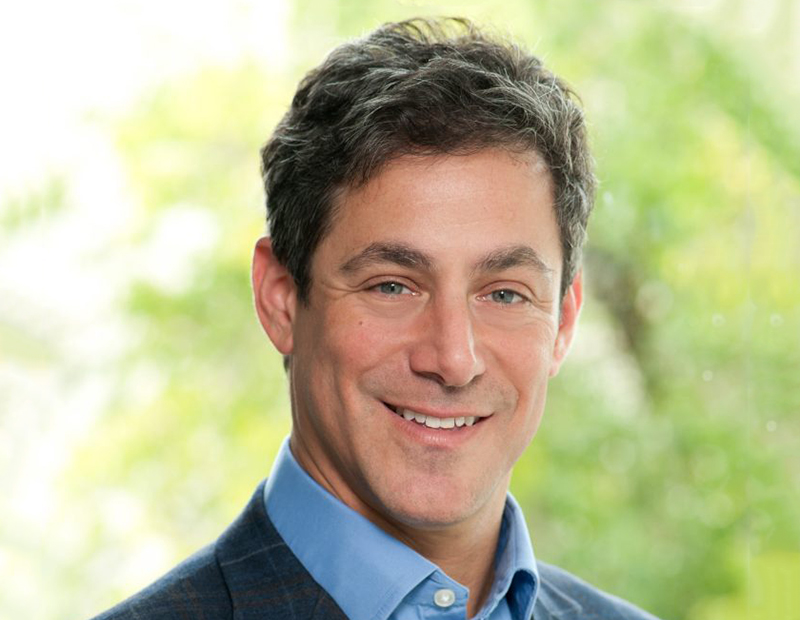Energy Efficiency and Empowering Operations
Green Generation’s Bradford Dockser connects the dots between real estate, energy, technology and improving the environment. He also shares tips for those starting to include energy-efficiency strategies in their businesses.
In a wide-ranging exchange with Commercial Property Executive, Generation Co-Founder & CEO Bradford Dockser discussed the links between energy efficiency and sustainability, its applicability to various property types and regional differences. Dockser shared a few tips for those starting to develop energy efficiency strategies, as well.
Which are your most common energy-efficient solutions? How do they vary in relation to property types?
Dockser: While there’s an exploding number of new technologies in the built environment, we initially focus on the correlation between energy consumption and physical occupancy and how technology can help us modulate energy usage accordingly. Control sensors enable us to understand how and when people use spaces.
It varies with different property types, of course. For example, in student housing, students tend to leave their residence in the morning for classes, stay out during the day and return in the evening. Over a 24-hour period, we can view how the building’s energy consumption modulates based on use patterns. Consumption patterns for hotels are certainly different than multifamily, office, mixed-use and other property types, so control sensors are an effective way to approach energy efficiency appropriately in each property type.
In our view, hospitals are mixed-use facilities that include the administrative office, the cafeteria, the retail store, the parking etc. When we assess these facilities, we need to reflect accurately the actual energy consumption of each element to deliver optimal results. This is done with equipment that can efficiently deliver and meet heating, cooling and lighting needs.
 Technology advancement is one of the main pillars of energy efficiency. How should the legal framework change to better accommodate the trend?
Technology advancement is one of the main pillars of energy efficiency. How should the legal framework change to better accommodate the trend?
Dockser: There are two ways you can look at this question. One is around data privacy. In general, technology today is producing massive amounts of data. While data is useful for optimizing technology and producing better results, who actually owns it is up for debate. Is it the occupant or the building owner? How can you use data for financial gain without negatively impacting one or more stakeholders?
Another area for discussion is around the lease structure. Green lease language is intended to help align the costs and benefits of building upgrades. For example, if an occupant pays the utility bills, but the owner makes upgrades to the facilities, we need to encourage green lease language that allows the owner to pass through some of the costs of improvement. Having good lease language to align costs and benefits is critical.
 Which are the biggest challenges you’ve been facing so far and how did you overcome them?
Which are the biggest challenges you’ve been facing so far and how did you overcome them?
Dockser: One of the biggest challenges we’ve faced is in hiring qualified people. We find hiring people who are multi-dimensional—both technical and creative—to be challenging … Our corporate values and investment in our people result in low turnover. In fact, most of our Millennial employees have grown with us for numerous years—a rarity in this day and age.
The other challenge has been on the client side. We don’t upgrade buildings just for the sake of upgrading—we want to demonstrate to our clients the real impact that our work has on their business. We focus on driving financial outcomes.
 Your activity includes markets outside of the U.S. What differences did you notice from one region to another?
Your activity includes markets outside of the U.S. What differences did you notice from one region to another?
Dockser: Though our clients tend to be similar across different geographies, one difference I have noticed is on the government side. In the U.S., governments use incentives to encourage energy efficiency, whereas Asia and Europe tend to have more stringent, mandated standards. And domestically, as the federal government has stepped back, many state and local governments have stepped up to fill the void when it comes to increasing energy efficiency, renewable energy standards and benchmarking.
Tell us more about what inspired you to found your company in 2011, when the real estate market was still in the early stages of recovery.
Dockser: In the early days of the real estate recovery, while revenue was still relatively weak, the main way to impact cash flow was through reducing expenses to increase asset value. We chose to focus on energy. Today, the lack of knowledge around energy issues remains—issues that include reducing consumption, thinking strategically about energy and tech in the built environment, and ways to create better spaces that are sensitive to occupants’ well-being. Because the demand for real estate and associated revenue were down during the early stages of recovery, the focus became about existing real estate assets and how to reduce operating costs to add value.
What do you recommend to owners and managers who are looking to build an energy strategy?
Dockser: Energy efficiency and sustainability are related, but also very different. Energy efficiency is explicitly about reducing financial costs to drive the value of assets. In contrast, sustainability is about holistically impacting the value of the organization.
For those seeking to build a sustainability strategy, it’s really about creating and executing a strategy around what their company stands for, which then trickles down to decisions related to waste, employee engagement, materials used, supply chain choices, transportation methods—even the type of paper to buy. Sustainability is much more all-encompassing than energy efficiency on a macro level.
Energy efficiency is focused on explicit ROI and sustainability includes softer ROIs that can be more difficult to quantify. We’ve seen many of our clients spend money for the main purpose of driving energy efficiency, but they end up also getting sustainability for free in the process.
 What tips do you have for those who are just starting to “Operate in the Green”?
What tips do you have for those who are just starting to “Operate in the Green”?
Dockser: Decide on the outcomes you’re striving for, look for cost-effective ways to achieve these outcomes, determine if you’re focused on energy efficiency or more big-picture sustainability and evaluate how you see your energy strategy impacting your business. The idea of ‘Operating in the Green’ is a double bottom line concept—cutting costs and increasing values while reducing the impact on the environment.
What are your thoughts on the future of sustainability and energy efficiency?
Dockser: We’re going to continue seeing increased efforts in energy efficiency and sustainability as more people come to realize the value returns that both provide for driving value in assets and to the community broadly. People are becoming more sensitive to water quality, air quality etc. This is not an issue that’s going away. More and more people now feel they owe it to future generations to do the right thing and we help them do it in a way that also creates current value.








You must be logged in to post a comment.